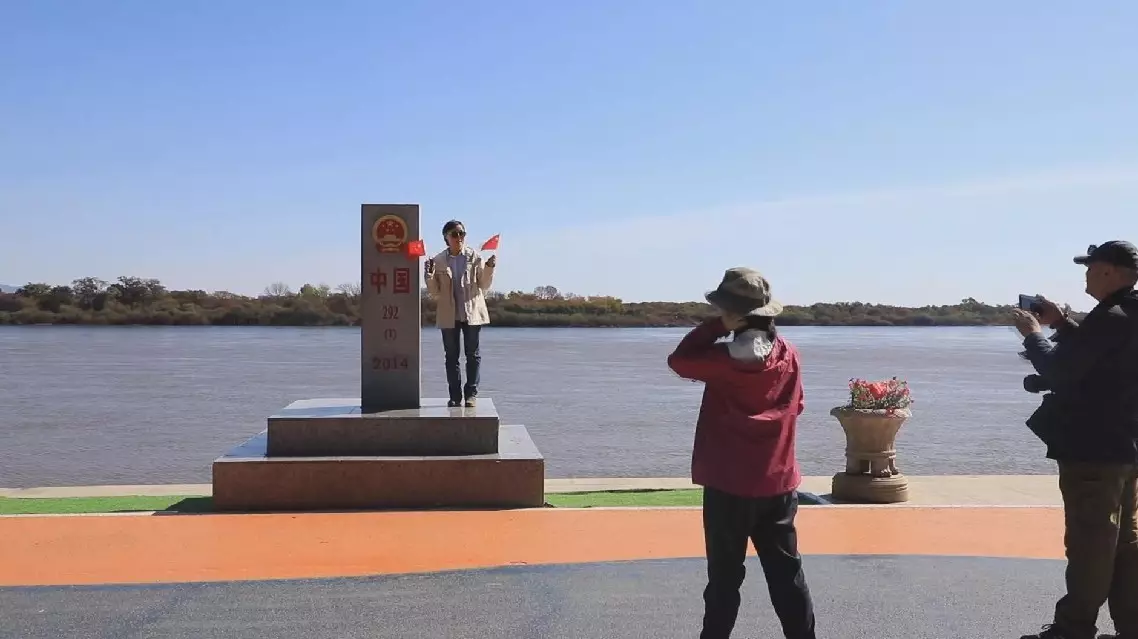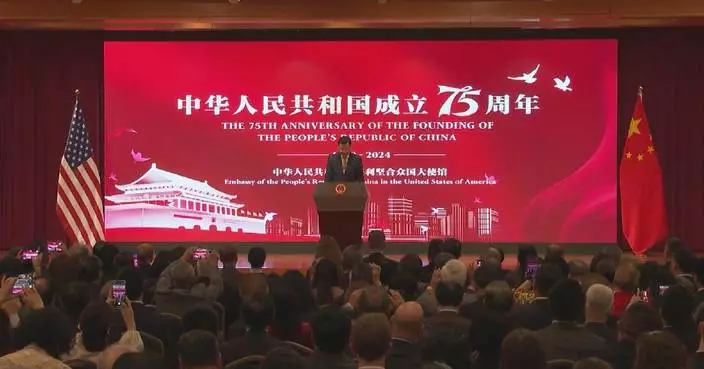A German scholar has witnessed how the Xiong'an New Area in north China's Hebei Province has transformed from a blueprint to a reality, emerging as a high-level modern locale.
Some 100 kilometers away from Beijing, the Xiong'an New Area has been designed as a major recipient of functions transferred from Beijing that are not essential to its role as China's capital.
Formerly a resident of Beijing, sustainability scholar Jan Jusuts Ingenhoff has been working and living in the area, dubbed a "city of the future," for around seven months. In an exclusive interview with China Central Television, Ingenhoff said the area is beginning to offer the sort of amenities he has come to expect from Chinese urban centers.
"Because we are used to, as foreigners, coming to the big cities, now we see here a really strong growing with this 1,000-year significance plan of President Xi. You have a huge train station in Xiong'an, which is amazing. And to witness and to see how it's growing and to help this institute here, the work is a privilege," said Ingenhoff, a consultant for the Xiong'an Innovation Research Institute under the Chinese Academy of Sciences.
As a holder of the Xiong'an Talent Card -- an official certificate granted by the local government to talented people -- Ingenhoff said that he can take the bus for free every day.
"I sort of like it. I can take the bus here. I'm really welcome here by all the people, they are very friendly. I can travel around, it's no difficulty at all, like in big cities," he said.
Now, the scholar and his team are focusing on applying optoelectronic technology to crop light management, aiming to provide optimized solutions for global energy transition and green agricultural technology.
The experience has left Ingenhoff with a deep impression of the area's vibrant innovation atmosphere. He also openly expressed his admiration for China and his fondness for Xiong'an.
"I simply just like China. I find it a great country. I find it exciting. People here (are) moving forward, (have) very positive energy. In five to 10 years you will see something like here comparable to Shenzhen. And I will tell the German people coming here, [they] can witness how the building of a new city is happening," said Ingenhoff.

Xiong'an emerges as high-level modern city: German Scholar
Visiting boundary markers seems to have become a new trend in holiday-making on frontier regions in Northeast China's Heilongjiang Province neighboring Russia so far in the week-long National Day holiday that started on October 1.
At the border gateways and boundary monuments on the 2,981-kilometer frontier in Heilongjiang, tourists from all over the country are seen stopping to have photos taken with the boundary monuments or markers, with some listening to stories told by frontier police officers about past events associated with the frontier regions.
In China, the National Day holiday is a peak travel and tourism season.
Lying in the easternmost point of China is the Wusu Town Dongji Square in Fuyuan City of Heilongjiang Province. Next to the huge sculpture bearing the Chinese character of "East" in the square, the five-star Chinese national flag is fluttering in the wind. Just beside the national flag is a boundary monument, which has become an attraction to visitors.
Many of the visitors say that having a picture taken with the boundary monument on the occasion of the National Day holiday would make them feel honored about happy powerful their motherland is.
Li Xin, a police officer with the Wusu Town Border Police Station on duty at the Dongji Square, said he has felt the enthusiasm of visitors.
Li said that the number of tourists visiting the Doingji Square so far in the National Day holiday has doubled compared to the same period of last year.
In Mohe, the northernmost city in China which is more than 2,000 kilometers away from Dongji, visitors are also seen flocking to the Beiji (North Pole) Village to have pictures taken with the local boundary marker.
Zhang Jiale, a police officer with the Arctic Border Police Station in Mohe, expressed the same feeling as Li Xin.
In Suifenhe, another frontier city in Heilongjiang, tourists also seen enthusiastically flocking to the boundary monument beside the third-generation border gateway to have pictures taken with it. The Suifenhe Gateway Scenic Spot is located at the zero point of Suifenhe Highway Port G10 Suiman Expressway, the largest land port to Russia in Heilongjiang Province. It is the only longitudinal cross-border scenic spot in China and the only one that integrates three generations of border gateways in China's gateway scenic spots.
In this scenic spot, tourists frequently ask Wang Jiaxing, a police officer with the Suifenhe Entry-Exit Border Checkpoint on duty, to help take photos or ask about how to make a tourist travel to the neighboring country.
Ke Zunlei, a tourist from Shanghai, visited the site with his wife and young daughter.
"Standing at a frontier region of my own country, I feel that this place is quite sacred," Ke said.
In Hutou Township of Jixi City in the province, the boundary marker "292-1-2014," which marks the starting point of the Wusuli River between China and Russia, also attracts many visitors to make a visit and take photos.

Visiting boundary markers becomes new trend in China's National Day holiday travel










